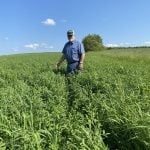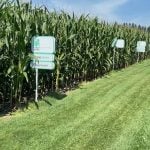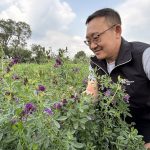Tag Archives alfalfa

New alfalfa varieties under development
Agriculture and Agri-food Canada researchers breeding alfalfa tolerant to acidic soils, drought and flooding

Crop plots feature latest in seeds genetics and management
Several companies are also hosting demonstrations at Canada’s Outdoor Farm Show

Research focuses on drought tolerant alfalfa
Yellow flowers could help scientists breed new varieties that cope with dry conditions

Winter wheat crops quickly advance, alfalfa weevil seen active
OMAFRA Field Crop Report for the week of May 16

DLF buys Corteva’s alfalfa seed business
Business to be 'fully transitioned' after 2024 season

Feed the crop that feeds the livestock!
OMAFRA Field Crop Report for the week ending September 4

DLF sowing the seeds of increased alfalfa breeding with Corteva aquisition

A soil health investigation
It took old and new technology to diagnose compaction as the culprit

Saudi Arabia highly dependent on grain imports
Alfalfa more profitable for domestic growers

Alfalfa autoxicity test would be useful tool
Not all factors behind autotoxicity are known but research is providing further answers
